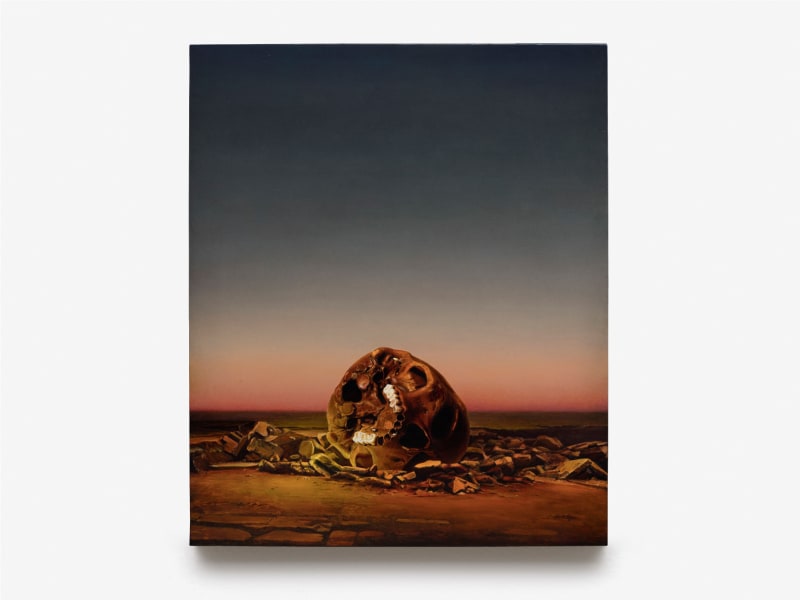The creation of the "life and death" series started two years ago on a sweltering afternoon when artist Yun Yongye found himself captivated by the model of a human skull. He wandered through his studio, carrying the skull and contemplating its presence. He placed it alongside various objects, using a Polaroid to explore potential compositions. Meanwhile, a page of poetry lay on the table, with Heinrich Heine's "Death" providing a narrative backdrop beyond the canvas:
"Our death is in the cool of night, our life is in the pool of day."
"The darkness glows, I’m drowning; the day has tired me with light."
He delighted in the idea that he could still create a few "fair" paintings, despite Paul Delaroche having sentenced painting to death 184 years ago. For an artist, the life and death of a painting is never physical. It's about whether their expression is distinctive enough and whether their technique remains vibrant and fresh. This concern for "the continuity of creativity" accompanies artists throughout their life, much like humanity's enduring fear of death. Even earlier, when Epicurus differentiated the concept of "death" and "dying," that "dying" becomes a part of "living" while "death" signifies the ultimate end. It echoed the relationship between painting and contemporary art, where dramatic shifts don't always occur suddenly, but on the contrary require time.
Perhaps it’s because some people firmly believe that "death is the eternal oblivion," which is why the old masters and our ancestors are remembered. Life is fleeting, making it exceptionally precious. Emotions may fade away, yet we choose to preserve cherished memories through photography and paintings. As the notion "vanity of vanities, saith the preacher, all is vanity" reflects in the concept of the Vanitas genre of still lives, we are warned that the fresher the ingredients, the quicker they spoil, underscoring the inherent transience of life.
Yun Yongye chooses to express himself through art: death can occur ceremoniously, surrounded by a wreath of flowers; or it can strike unexpectedly on a lawn, witnessed by two rabbits. Death can blur our vision, obscuring its true nature; or it can be softened and distanced, as seen in Richter and in books where a hazy filter imparts a sense of warmth. Life and death are profound and complex: rather than defining them, we should simply seize the moment and embrace.
Yun Yongye was born in Hainan in 1990. He graduated from the Oil Painting Department of Hubei Institute of Fine Arts in 2012. He now lives and works in Wuhan. He has held solo exhibitions at HdM Gallery, Beijing and Paris; and RS_PROJECTS, Wuhan. He has also participated in group exhibitions at Times Art Museum, Beijing; Blunt Society, Shanghai; W.ONESPACE, Shenzhen; Tokyo Gallery, Beijing; and Fine Arts Literature Art Center, Wuhan.

